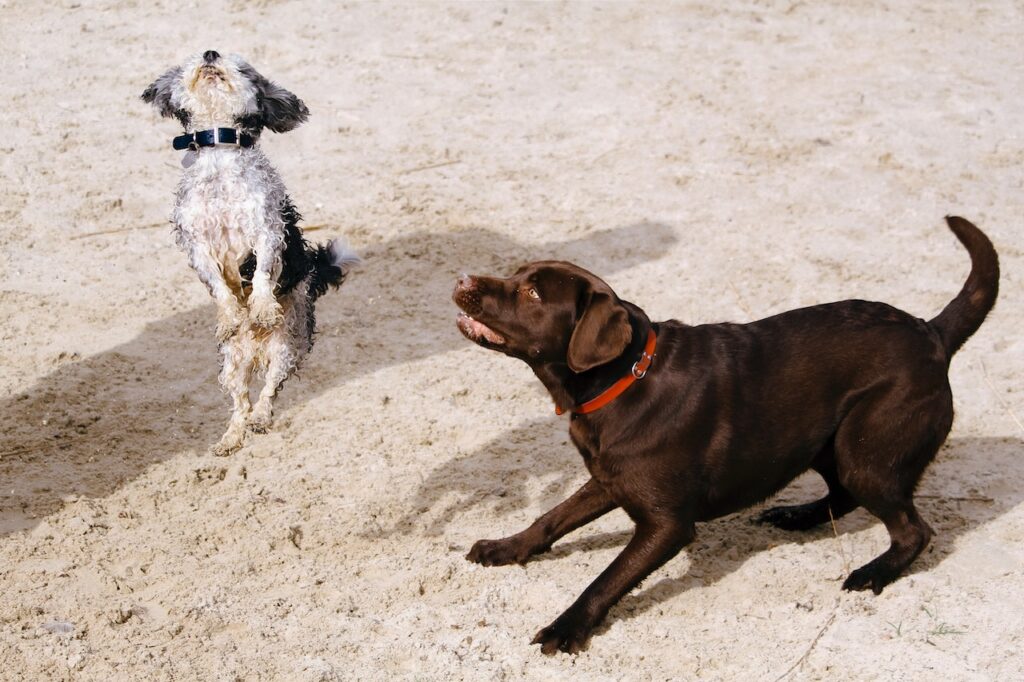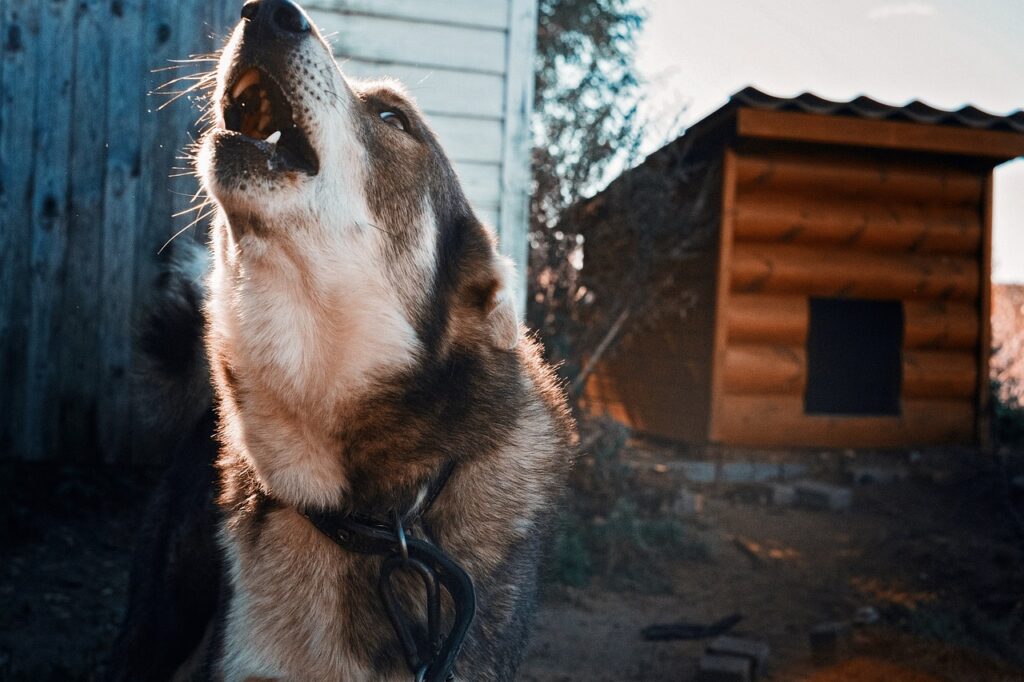Hello, dog enthusiasts! Today, let’s unpack a rather peculiar, sometimes baffling dog behavior – air licking. You might have noticed your four-legged companion suddenly licking the air, as if catching invisible butterflies. Why do they do this, and what can we deduce from such a quirky behavior? Buckle up as we venture on this explorative journey through the world of canine gestures and communications.
A Curious Observation: The Phenomenon of Air Licking
Picture this: you are lounging with your faithful furry friend when suddenly, their tongue starts making swift motions, seemingly licking the invisible entities floating in the air.
The Initial Bewilderment
- A Bizarre Sight: Initially, witnessing this behavior might be akin to watching an abstract piece of art; it seems inexplicable yet fascinating.
- A Matter of Curiosity: Naturally, as a dog lover, curiosity takes over, nudging you to understand the intricacies behind this peculiar activity.
Could this be a masterpiece of canine performance art, or is there more than meets the eye?
Setting the Scene for Investigation
- Observing Patterns: To get to the heart of the matter, one needs to be a vigilant observer, keeping tabs on the frequency and context of these air-licking sessions.
- Consulting Experts: Sometimes, diving into literature or consulting experts can shed light on this baffling scenario.
But, is it just a frivolous act, or does it hold a deeper significance in the realm of dog behavior?
Unearthing the Probable Causes
A journey into the why behind the air licking phenomenon unveils several potential reasons. Let’s dissect them one by one.
A Sensory Feast
- Taste and Smell Confluence: Dogs perceive their surroundings largely through their noses and mouths. Sometimes, the air licking can be a reaction to a tantalizing aroma wafting in the air.
- A Flavorful Experiment: Perhaps your dog is trying to taste the flavorsome traces lingering in the air, making it a sensorial feast of sorts.
Could this be a fine example of their culinary exploration, a gastronomic adventure in the comfort of their home?
Communicative Gestures
- Seeking Attention: Your dog might resort to air licking as a novel way to grab your attention, especially if it succeeds in making you react or engage with them.
- Expressing Anxiety or Stress: Sometimes, this could be a non-verbal cue indicating that they are experiencing stress or anxiety, a silent plea for comfort and reassurance.
Is it possible that they are weaving a tapestry of messages through the rhythmic dance of their tongues?
Health Concerns: When to Ring the Alarm Bells
While it’s often harmless, sometimes, this air licking can be indicative of underlying health issues. It’s essential to keep an eye out for potential red flags.
Dental Issues
- Pain or Discomfort: If your dog is experiencing any dental issues or oral discomfort, they might resort to air licking as a coping mechanism.
- Possible Infections: Sometimes, infections in the mouth can trigger this response, as they try to soothe the irritation or pain.
Does this mean that a vigilant eye could be the first line of defense in safeguarding your dog’s health?
Gastrointestinal Problems
- Nausea or Digestive Discomfort: Dogs with gastrointestinal issues may resort to air licking, perhaps in an attempt to alleviate nausea or other discomforts.
- Seeking Medical Advice: If you suspect that this behavior is linked to gastrointestinal problems, it’s prudent to consult a veterinarian for proper guidance and treatment.
Are we then, sometimes witnessing silent cries for help, veiled under the guise of this quirky behavior?
Navigating the Behavioral Aspects
Understanding the behavioral context is crucial in decoding the air licking mystery. Here, we unravel the behavioral tapestry woven by our canine friends.
Compulsive Behavior
- Developing a Habit: In some instances, air licking evolves into a compulsive behavior, especially if it’s reinforced unknowingly by the owners.
- Seeking Behavioral Counseling: If it turns into a compulsive habit, seeking expert advice to address and manage this behavior becomes essential.
Could this be a sign that our dogs are painting their canvas of communication with strokes of repetitive actions?
Calming Mechanism
- Self-soothing Strategy: Some dogs might adopt air licking as a self-soothing strategy, helping them calm their nerves in stressful situations.
- Creating a Safe Environment: It is vital to create a safe and nurturing environment where your dog feels secure, reducing the chances of such behaviors stemming from anxiety.
Is it plausible that they are crafting their sanctuary of peace, one lick at a time?
The Road Ahead: Addressing the Air Licking Behavior
So, how do we address this behavior and ensure the well-being of our beloved pets? Here’s a road map to guide you:
Observation and Understanding
- Keen Observation: The first step is to be a keen observer, understanding the triggers and contexts of this behavior.
- Building a Bond of Understanding: This not only helps in addressing the issue but also fosters a deeper bond of understanding between you and your pet.
Isn’t it true that sometimes, the solutions lie in the quiet observations of their silent conversations?
Consulting the Experts
- Seeking Veterinary Advice: If there are health concerns associated with air licking, consulting a veterinarian becomes imperative.
- Behavioral Training: Sometimes, seeking behavioral training to manage and curb this habit can go a long way in ensuring their happiness and well-being.
Could it be that expert intervention is sometimes the bridge to their happiness, helping them paint a brighter, healthier picture of life?
Conclusion: The Symphony of Canine Communication
In conclusion, our journey through the air-licking maze reveals a symphony of communications, nuanced and varied, yet profoundly significant. The language of dogs is intricate, laden with messages conveyed through seemingly simple gestures.
Key Takeaway
Understanding the air licking behavior in dogs unravels layers of communication, health indicators, and behavioral aspects that are woven intricately in their daily life. It’s a dance of tongues, a silent symphony of messages that speak volumes about their experiences, emotions, and well-being. As dog lovers, diving deep into this language can open up new horizons of understanding and bonding, helping us forge connections that are both profound and joyous.
So, are you ready to become a fluent speaker in the silent, expressive language of dogs, decoding messages, one air lick at a time?



